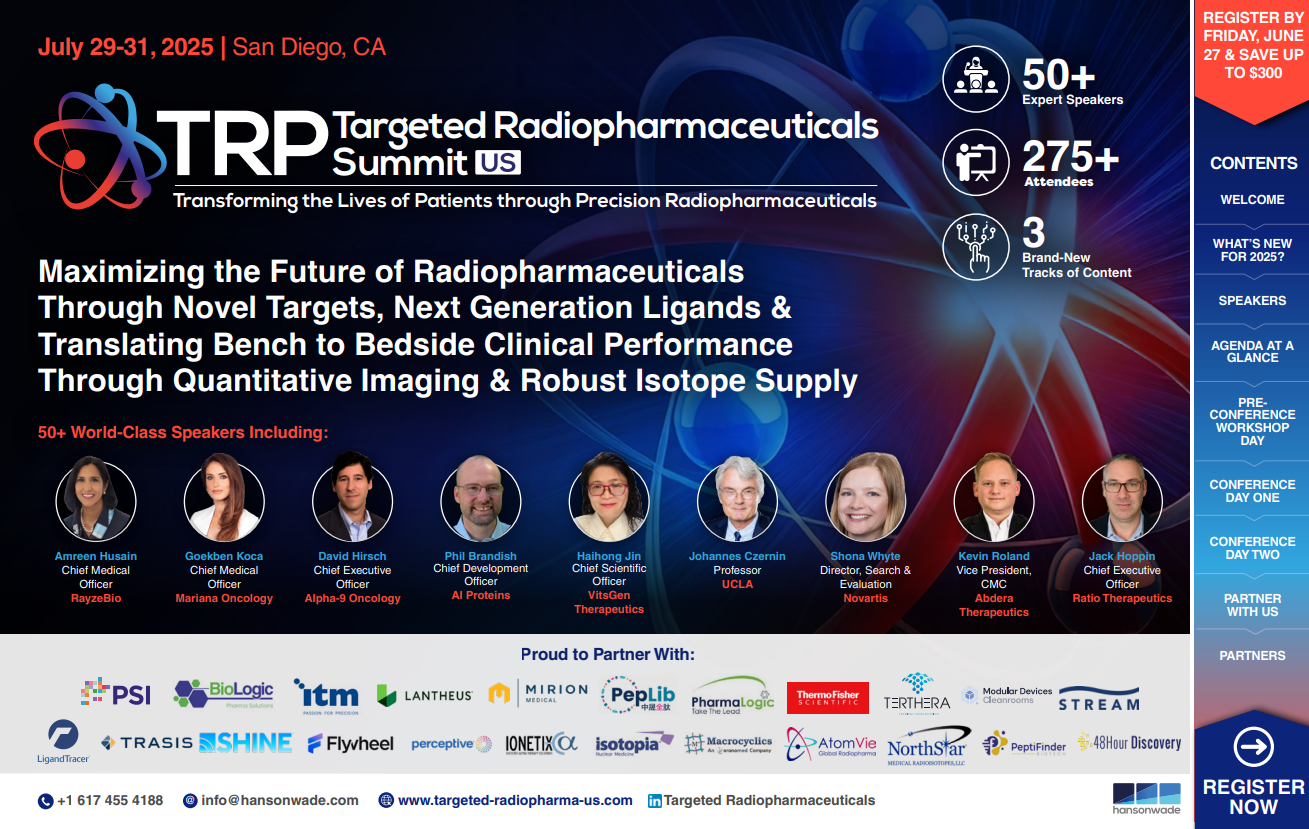What Can You Expect in 2025?
With 400+ active radiopharmaceuticals drugs currently in development and expanding into new disease indications, this year’s 4th Targeted Radiopharmaceuticals Summit US returns with a refreshed and comprehensive program, covering the latest industry developments and addressing pressing challenges.
Offering you a tightly focused agenda dedicated to industry-specific topics, all aimed at advancing approvals and commercialization. Key areas of focus include isotope supply, clinical development, regulatory clarity, novel molecule design, and much more.

Unmissable Agenda Highlights
Harnessing Cutting-Edge Engineering Techniques
Pioneering novel radiopharmaceutical targeting molecules derived from engineered antibodies, peptides, bi-specifics and mini proteins with Telix Pharmaceuticals, AI Proteins, OncoOne and VitsGen
Ensuring Successful Clinical Translation
Employing phase zero and optimal first-in human design strategies with AdvanCell, Alpha-9 Oncology and RayzeBio, while leveraging real-world evidence in late-phase design with UCLA, UCSF and Convergent Tx
Evaluating the Supply Chain and CMC Landscape
Analyzing the current and future dynamics of radiopharmaceutical supply chains, and the CMC landscape, including isotope availability, funding trends, and emerging technologies with William Blair and Abdera Therapeutics
Understanding the Radiopharmaceutical Regulatory Landscape
Comparing diagnostics, theranostics and therapeutics, while harmonizing regulatory standards with RadioPharm Theranostics and Fusion Pharmaceuticals
Attracting Continued Investment and Funding
Understanding investor trends, focusing on, targeting moiety, platform technology, and payloads with Novartis, William Blair, Telix Pharmaceuticals, and Alpha-9 Oncology
Divide & Conquer
Built with input from experts at Novartis, Eli Lilly, Telix Pharmaceuticals, and many others, the program has been specifically designed to address the key challenges at each stage of development. The summit will also bring everything together with broader topics covered in our plenary session, catering to the entire audience.
A snapshot of key sessions featured in each track across the 2025 program:
Discovery & Preclinical Track
Expanding Horizons with Novel Targeting Moieties to Optimize Radiopharmaceutical Development
• Alessandro Mascioni, Director, Targeting Technologies, Telix Pharmaceuticals
• James Bowman, Director of Protein Engineering, AI Proteins
Translational & Early Stage Clinical Track
Delivering Translational Success Through Optimal Preclinical Insights & Forward-Thinking Radiopharmaceutical Design
• Micheal Groaning, Vice President, Global Program Leader, Fusion Pharmaceuticals
• Amreen Husain, Chief Medical Officer, RayzeBio
Supply Chain & Late Stage Clinical Track
Strengthening Radiopharmaceutical CMC & Supply Chain through Novel Technologies & Regulatory Understandings While Streamlining Commercialization
• Kevin Roland, Vice President, CMC, Abdera Therapeutics
• Johannes Czernin, Professor, UCLA
Attending Companies Include













